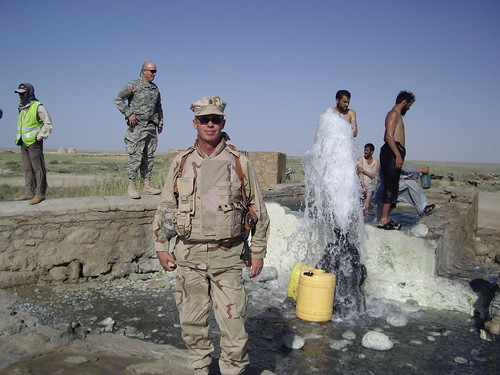Introduction
Afghanistan is a logical extension of the many regions and countries highlighted in this blog. Certainly geographically. But in soaking customs one would suspect not.
Problem though is that references to Afghani soaks are scarce. Luckily this is counterbalanced by the excellent insight gained by Saba et. al's (2004) publication on Afghanistans potential for geothermal energy. Large extracts are as follows:
'The use of geothermal resources in Afghanistan might have begun with the settlement of the first people in the vicinity of the many hot springs in the valleys of Hindu Kush, where these springs, served as a source of warmth, and cleansing, and their mineral water as a source of healing. In this way, probably, long time ago, these people learned to use the healing properties of the hot water that came naturally out of the ground to make their life easier. Through experience, they might have discovered that a good soak in those hot springs cured certain ailments, e.g., stiff muscles and sore backs became limbed, skin diseases cleared up, and wounds healed. For this particular reason, many of these hot springs in Afghanistan are called "chashma-e shafa", meaning the healing spring, a property that deemed them sacred. Thus, the communities all over the country rightfully consider the protection of these springs as their duty.Included in this publication is an extensive list of geothermal sites most of which no other references exist. In all, it seems that this publication refers to over 200 hot springs, which would make Afghanistan a potential hot spring heaven.
Modern use of mineral thermal springs in Afghanistan goes back to 1940s, when few thermal springs in Herat (Obe and Safed Koh), Balkh (Aabe Garm), and Orezgan [Uruzgan, possibly named Ghorghory] were developed for therapeutic purposes. However, soon these developments were abandoned. In 1974, the Obe springs in Herat were renovated for bathhouse usage (Akhi, 2001). Probably, at the same times, single bathrooms were built on hot springs along the Kabul-Mazare Sharif highway in Pole-khumri and Hairatan towns. The rest of the hot springs of Afghanistan are left undeveloped to date, but the people continue to use them in their traditional ways'.
Afghani hot springs. In depth
Some more info is available on Obe [Obey / Obay] hot spring which Saba et al (2004) mention more prominently. On internet there was a photo (from 2004) with the following text:
'New development on the hillside, opposite to the lower hot spring of the Obe Hot Springs Valley. This is one of few places that Herat is adventure in the wilderness and tap into the healing power of its geothermal and mineral waters'.Another prominent area to find hot soaks in Afghanistan is the northern Wakhan valley. The Wakhan river forms the boundary with Tajikistan where also hot springs are found more easily it seems as access is way better. See the Tajikistan chapter for more information on this.
On the Afghan side of the Wakhan I found this mention from the Letters from Afghanistan blog:
'On the fifth day we descended from the mountains to the valley and the road. We dropped 5,000 feet in altitude to the village of Kip Kut. That night we soaked in a natural hot spring. Slipping into the steamy, sulphurous water, we felt every inch of our burned and cut skin cry out, but what ecstasy!'The mountainunity.org site used to add:
'Hot Springs are located in various places down the Wakhan Corridor. This hot spring is located in Sargez just past Kipkut.Two mud huts have been built over the hot spring for privacy. It is not five star but when you have been short of hot water it's a welcome treat. The water is emptied after each person, so it can take a short time to fill. The man who runs it is extremely friendly, we paid 100 Afghanis each to support his work. The Spring is signposted and will take you on a path around the left side of a mountain. Its' about 5-10 minutes walk from the road. GPS location - N36d 58m 06.3s, E072d 54m 53.6s'.The only other webtext on hot springs in Afghanistan is the following:
'Chishmah-i-Ayyub (Shrine built over hot spring where Ayyub – Job – is believed to have rested while journeying through Afghanistan)'.And that, would you believe it, concludes all that can be found on hot springs in Afghanistan.
'Me and the major at the springs'by gvsea. Possibly Hairaton (Hairatan / Airaton)? Another few photo's are on picasa.
[Updated March 2015]
Notes:
Saba, D. S., Najaf, M. E., Musazai, A. M., and Taraki, S. A. (2004) Geothermal Energy in Afghanistan: Prospects and Potential. Center on International Cooperation, New York University, New York, USA. & Afghanistan Center for Policy and Development Studies, Kabul, Afghanistan.



Soaked at Obeh in 1972 at two places. There was a lovely little building down the valley built for the King though I was told he never made it there. A bit further up the valley was a stone structure open to the air. Watched the snow fall while soaking. Good times back in the day
ReplyDelete